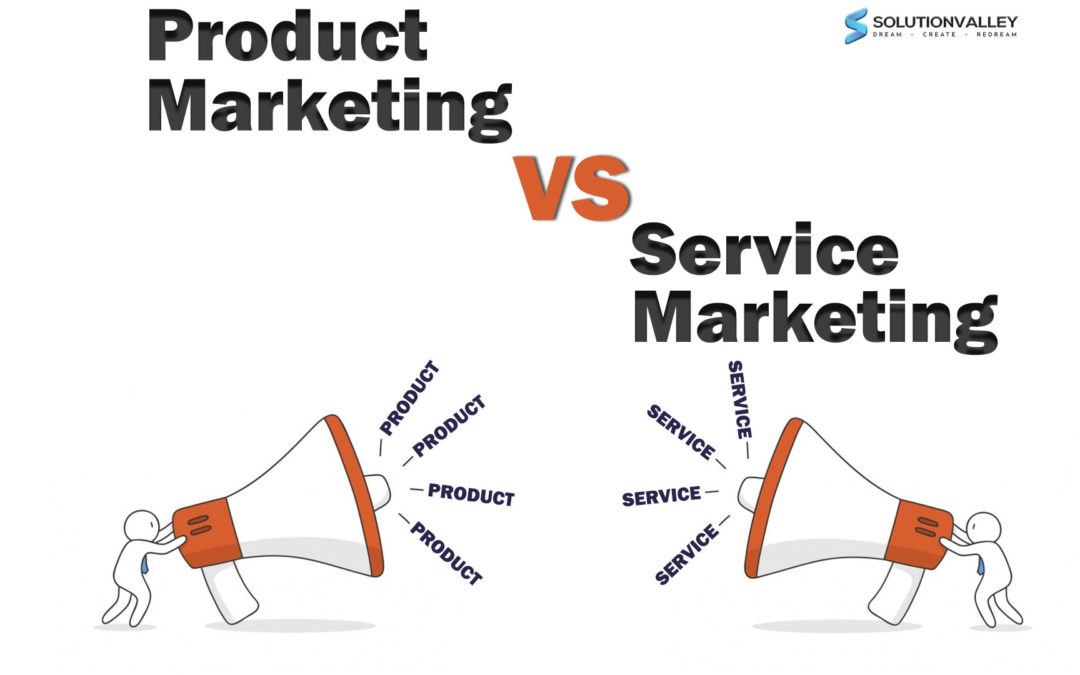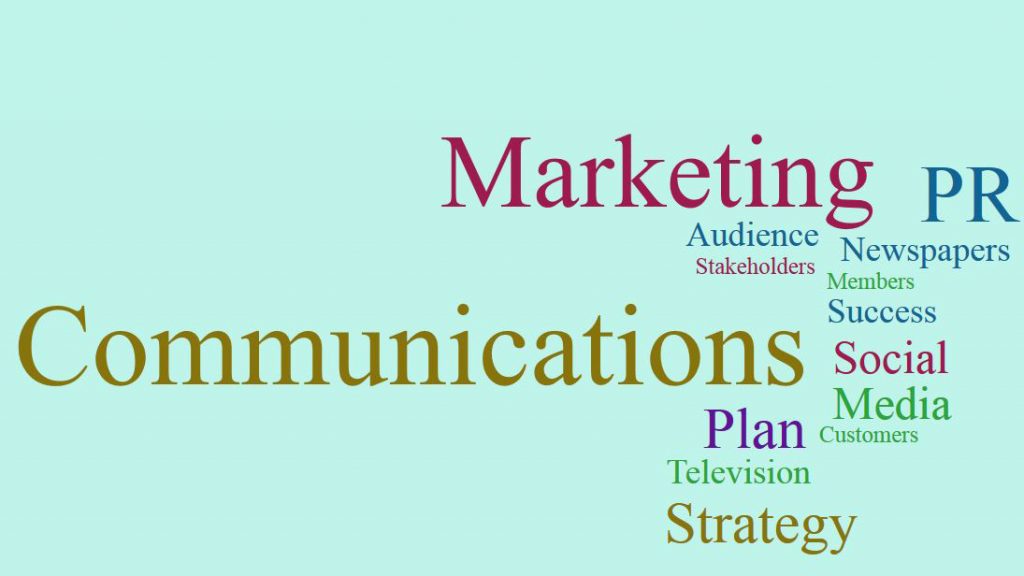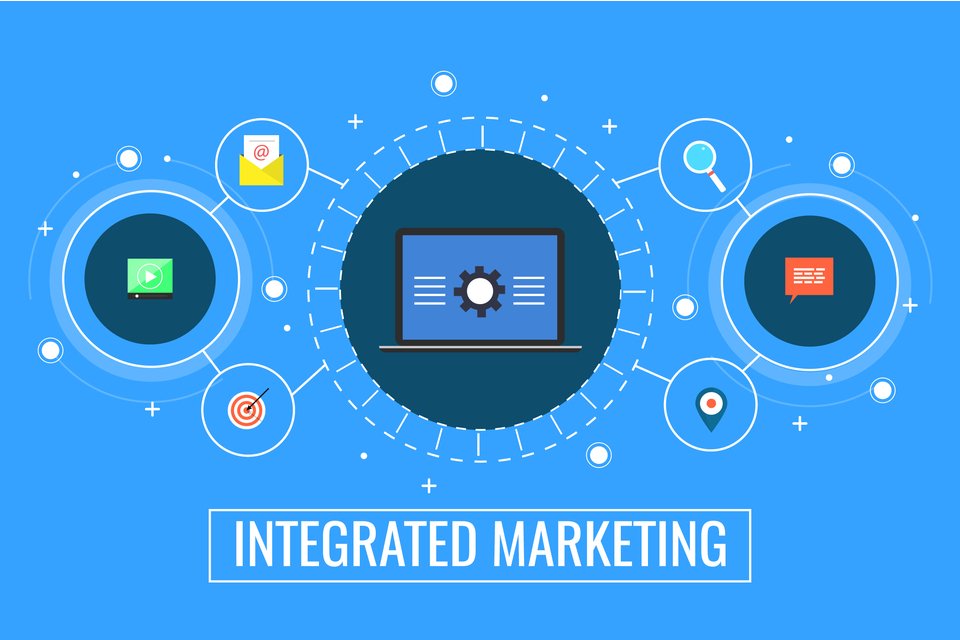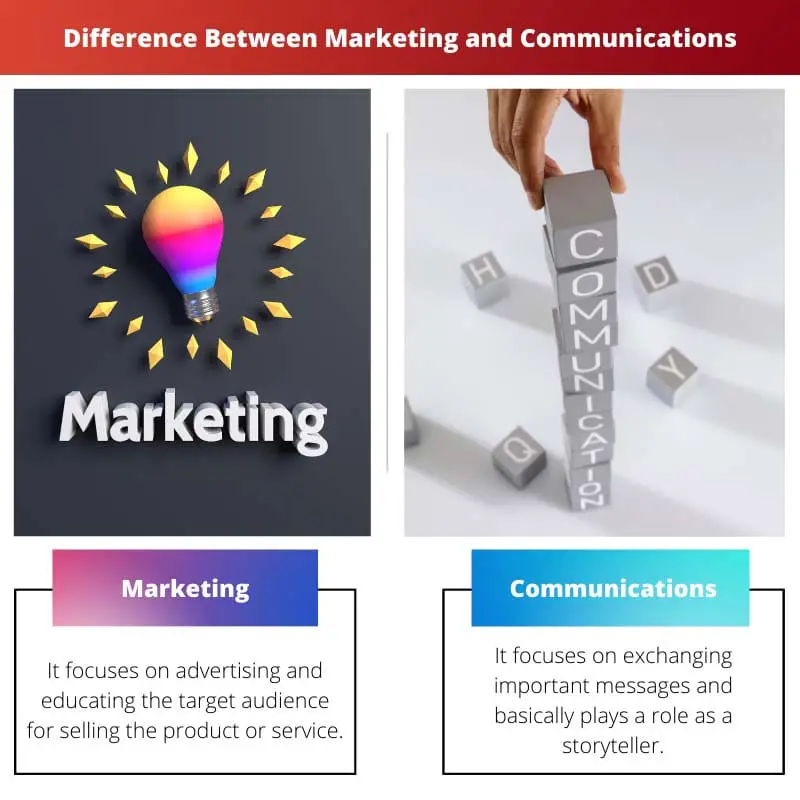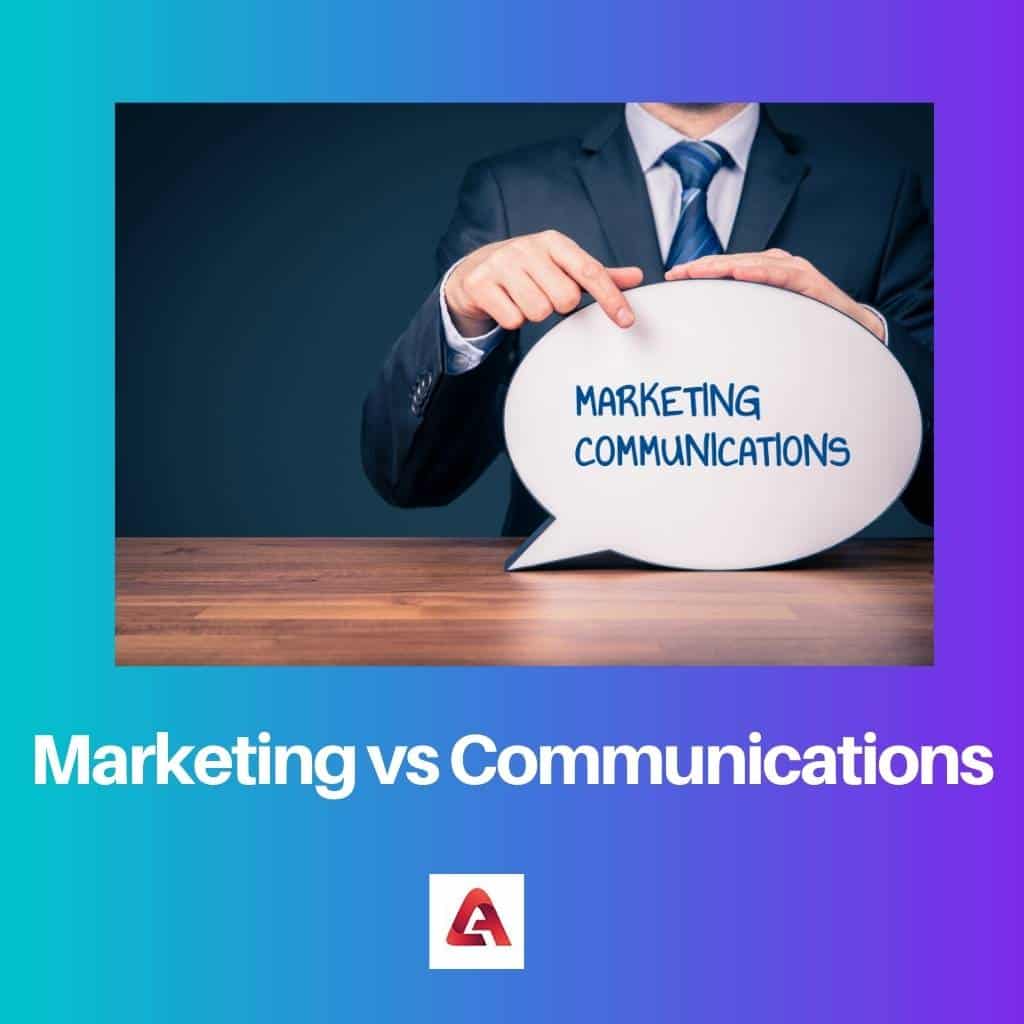Navigating the Interconnected World of Corporate Messaging
In today’s fast-paced business landscape, effective communication is crucial for success. Two functions that are often intertwined but serve distinct purposes are communications and marketing. Understanding the difference between these two disciplines is essential for businesses to develop a cohesive brand message and achieve their objectives. The distinction between communications and marketing is not always clear-cut, and the lines between the two can become blurred. However, recognizing the unique roles and responsibilities of each function can help businesses to optimize their messaging and promotional efforts.
Communications and marketing are both critical components of a company’s overall strategy, but they differ in their primary objectives, strategies, and tactics. While communications focuses on conveying information, building relationships, and facilitating dialogue, marketing is concerned with promoting products or services, identifying target audiences, and driving sales. By grasping the nuances of each function, businesses can create a more effective and integrated approach to their messaging and promotional efforts.
The importance of understanding the difference between communications and marketing cannot be overstated. In today’s digital age, businesses are constantly seeking new ways to connect with their audiences and stay ahead of the competition. By recognizing the distinct roles of communications and marketing, businesses can develop a more comprehensive and cohesive brand message that resonates with their target audience. This, in turn, can lead to increased brand awareness, customer engagement, and ultimately, revenue growth.
Furthermore, the integration of communications and marketing efforts can have a significant impact on a company’s bottom line. By aligning these functions and creating a unified brand message, businesses can reduce duplication of effort, improve efficiency, and enhance their overall competitiveness. In addition, the use of technology, such as social media and content marketing, can further amplify the impact of communications and marketing efforts, allowing businesses to reach a wider audience and build stronger relationships with their customers.
As businesses continue to navigate the complexities of the modern marketplace, understanding the difference between communications and marketing will become increasingly important. By recognizing the unique strengths and weaknesses of each function, businesses can create a more effective and integrated approach to their messaging and promotional efforts, ultimately driving business success.
Defining Communications: The Art of Conveying Information
Communications is a vital function within any organization, playing a crucial role in conveying information, building relationships, and facilitating dialogue with various stakeholders. At its core, communications involves the exchange of information, ideas, and messages between individuals, groups, or organizations. Effective communications is essential for building trust, fostering collaboration, and driving business success.
Within an organization, communications can take many forms, including internal communications, external communications, and crisis communications. Internal communications focuses on conveying information to employees, stakeholders, and other internal audiences, while external communications targets external stakeholders, such as customers, investors, and the media. Crisis communications, on the other hand, involves managing communications during times of crisis or uncertainty.
Communications serves several key purposes within an organization. Firstly, it helps to build relationships with various stakeholders, including employees, customers, and investors. By conveying information and facilitating dialogue, communications can foster trust, loyalty, and engagement. Secondly, communications plays a critical role in shaping an organization’s reputation and brand identity. By consistently conveying a clear and compelling message, organizations can build a strong reputation and establish themselves as leaders in their industry.
In addition to its internal and external functions, communications also involves the use of various channels and tools, including social media, email, and content marketing. By leveraging these channels, organizations can reach a wider audience, build brand awareness, and drive engagement. Furthermore, communications involves the use of various tactics, including storytelling, messaging, and positioning, to convey information and build relationships.
Understanding the role of communications within an organization is essential for developing effective communications strategies. By recognizing the importance of communications in building relationships, shaping reputation, and driving business success, organizations can create a comprehensive communications plan that aligns with their overall business objectives.
In contrast to marketing, which focuses on promoting products or services, communications is concerned with conveying information and building relationships. While marketing is often focused on driving sales and revenue, communications is focused on building trust, fostering collaboration, and driving long-term business success. By understanding the difference between communications and marketing, organizations can develop a more effective and integrated approach to their messaging and promotional efforts.
Marketing: The Strategic Promotion of Products or Services
Marketing is a critical function within any organization, playing a vital role in promoting products or services, identifying target audiences, and driving sales. At its core, marketing involves the creation and implementation of strategies designed to reach and engage with customers, ultimately driving revenue and business growth.
Marketing serves several key purposes within an organization. Firstly, it helps to identify and understand target audiences, including their needs, preferences, and behaviors. By developing a deep understanding of these audiences, organizations can create marketing strategies that resonate with them and drive engagement. Secondly, marketing plays a critical role in differentiating an organization’s products or services from those of its competitors. By highlighting the unique features and benefits of its offerings, an organization can establish a competitive advantage and drive sales.
Marketing involves the use of various tactics and channels, including advertising, content marketing, social media, and email marketing. By leveraging these channels, organizations can reach a wider audience, build brand awareness, and drive engagement. Furthermore, marketing involves the use of various metrics and tools, including data analytics and market research, to measure the effectiveness of marketing efforts and make data-driven decisions.
There are several key types of marketing, including digital marketing, traditional marketing, and experiential marketing. Digital marketing involves the use of digital channels, such as social media and email, to reach and engage with customers. Traditional marketing involves the use of traditional channels, such as print and television, to reach and engage with customers. Experiential marketing involves the creation of immersive experiences, such as events and activations, to engage with customers and build brand awareness.
Understanding the role of marketing within an organization is essential for developing effective marketing strategies. By recognizing the importance of marketing in promoting products or services, identifying target audiences, and driving sales, organizations can create a comprehensive marketing plan that aligns with their overall business objectives.
In contrast to communications, which focuses on conveying information and building relationships, marketing is focused on promoting products or services and driving sales. While communications is often focused on building trust and fostering collaboration, marketing is focused on driving revenue and business growth. By understanding the difference between communications and marketing, organizations can develop a more effective and integrated approach to their messaging and promotional efforts.
The difference between communications and marketing is not always clear-cut, and the lines between the two can become blurred. However, by recognizing the unique roles and responsibilities of each function, organizations can create a more comprehensive and cohesive brand message that resonates with their target audience.
Key Differences: Communications vs. Marketing
While communications and marketing are both critical functions within an organization, they serve distinct purposes and have different objectives, strategies, and tactics. Understanding the key differences between these two functions is essential for developing effective communications and marketing strategies that align with business objectives.
One of the primary differences between communications and marketing is their objectives. Communications is focused on conveying information, building relationships, and facilitating dialogue, while marketing is focused on promoting products or services, identifying target audiences, and driving sales. This difference in objectives is reflected in the strategies and tactics used by each function. Communications strategies often focus on building trust, fostering collaboration, and creating a positive reputation, while marketing strategies focus on creating awareness, generating leads, and driving conversions.
Another key difference between communications and marketing is their target audiences. Communications often targets a wide range of stakeholders, including employees, customers, investors, and the media, while marketing typically targets specific customer segments or demographics. This difference in target audiences is reflected in the messaging and channels used by each function. Communications messaging often focuses on building relationships and conveying information, while marketing messaging focuses on promoting products or services and driving sales.
The tactics used by communications and marketing also differ significantly. Communications tactics often include media relations, crisis communications, and internal communications, while marketing tactics include advertising, content marketing, and social media marketing. This difference in tactics is reflected in the metrics used to measure success. Communications metrics often focus on media coverage, message resonance, and relationship building, while marketing metrics focus on website traffic, lead generation, and conversion rates.
Despite these differences, communications and marketing are often intertwined and can have a significant impact on each other. Effective communications can help to build trust and credibility, which can in turn drive marketing success. Similarly, successful marketing campaigns can help to build brand awareness and drive sales, which can in turn impact communications efforts.
Understanding the key differences between communications and marketing is essential for developing effective strategies that align with business objectives. By recognizing the unique roles and responsibilities of each function, organizations can create a more comprehensive and cohesive brand message that resonates with their target audience.
In order to illustrate the differences between communications and marketing, let’s consider an example. A company launches a new product and wants to promote it to its target audience. The marketing team develops a campaign that includes advertising, content marketing, and social media marketing, with the goal of driving sales and generating leads. Meanwhile, the communications team develops a strategy that focuses on building relationships with key stakeholders, including the media and industry influencers, with the goal of building trust and credibility. While the objectives and tactics of these two functions differ, they are both critical to the success of the product launch.
How to Integrate Communications and Marketing for Maximum Impact
Integrating communications and marketing efforts is crucial for achieving business objectives and creating a cohesive brand message. When these two functions work together, they can amplify each other’s impact and drive business success. However, integrating communications and marketing requires a strategic approach that aligns with the organization’s overall goals and objectives.
One of the key steps in integrating communications and marketing is to define a clear brand message and value proposition. This message should be consistent across all communications and marketing channels, and should resonate with the target audience. By defining a clear brand message, organizations can ensure that all communications and marketing efforts are aligned and working towards the same goal.
Another important step in integrating communications and marketing is to align the objectives and strategies of these two functions. Communications objectives should focus on building relationships, conveying information, and facilitating dialogue, while marketing objectives should focus on promoting products or services, identifying target audiences, and driving sales. By aligning these objectives, organizations can ensure that communications and marketing efforts are working together to achieve business objectives.
In addition to aligning objectives and strategies, organizations should also integrate their communications and marketing tactics. This can include using social media and content marketing to build brand awareness and drive engagement, or using data analytics to measure the effectiveness of communications and marketing efforts. By integrating tactics, organizations can create a cohesive brand message that resonates with their target audience.
Technology can also play a critical role in integrating communications and marketing efforts. Social media, content marketing, and data analytics can all be used to build brand awareness, drive engagement, and measure the effectiveness of communications and marketing efforts. By leveraging these technologies, organizations can create a more integrated and effective communications and marketing strategy.
Finally, organizations should measure the effectiveness of their integrated communications and marketing efforts. This can include using metrics such as website traffic, social media engagement, and lead generation to measure the impact of communications and marketing efforts. By measuring effectiveness, organizations can refine their strategy and make data-driven decisions to optimize their communications and marketing efforts.
By integrating communications and marketing efforts, organizations can create a more cohesive brand message, drive business success, and achieve their objectives. By aligning objectives and strategies, integrating tactics, leveraging technology, and measuring effectiveness, organizations can create a powerful communications and marketing strategy that resonates with their target audience.
In order to illustrate the importance of integrating communications and marketing, let’s consider an example. A company launches a new product and wants to promote it to its target audience. The communications team develops a strategy that focuses on building relationships with key stakeholders, including the media and industry influencers, while the marketing team develops a campaign that includes advertising, content marketing, and social media marketing. By integrating these efforts, the company can create a cohesive brand message that resonates with its target audience and drives business success.
The Role of Technology in Modern Communications and Marketing
Technology has revolutionized the way businesses communicate and market themselves. The rise of digital channels, such as social media, content marketing, and email marketing, has transformed the way companies interact with their customers, stakeholders, and the wider public. In this article, we will explore the impact of technology on communications and marketing, and discuss the various tools and platforms that are available to businesses.
Social media is one of the most significant technological advancements in recent years, and has had a profound impact on communications and marketing. Platforms such as Facebook, Twitter, and LinkedIn have made it possible for businesses to connect with their customers and stakeholders in real-time, and to share information and updates about their products and services. Social media has also enabled businesses to build brand awareness, engage with their audience, and drive website traffic and sales.
Content marketing is another key area where technology has made a significant impact. With the rise of digital channels, businesses can now create and distribute high-quality content to their target audience, such as blog posts, videos, and infographics. This content can be used to educate and inform customers, build brand awareness, and drive sales. Content marketing platforms, such as HubSpot and Marketo, have made it easier for businesses to create, distribute, and measure the effectiveness of their content.
Data analytics is also a critical area where technology has made a significant impact. With the rise of big data, businesses can now collect and analyze vast amounts of data about their customers, stakeholders, and the wider public. This data can be used to gain insights into customer behavior, preferences, and needs, and to inform communications and marketing strategies. Data analytics platforms, such as Google Analytics and Adobe Analytics, have made it easier for businesses to collect, analyze, and act on data.
In addition to these technologies, there are many other tools and platforms that are available to businesses, such as email marketing software, customer relationship management (CRM) systems, and marketing automation platforms. These tools can help businesses to streamline their communications and marketing efforts, and to improve the effectiveness of their campaigns.
Overall, technology has transformed the way businesses communicate and market themselves. By leveraging these technologies, businesses can build brand awareness, engage with their audience, drive website traffic and sales, and gain insights into customer behavior and preferences. As technology continues to evolve, it is likely that we will see even more innovative solutions emerge, and businesses will need to stay ahead of the curve to remain competitive.
In order to illustrate the impact of technology on communications and marketing, let’s consider an example. A company uses social media to promote its products and services, and to engage with its customers and stakeholders. The company also uses content marketing to educate and inform its target audience, and to build brand awareness. By leveraging these technologies, the company is able to build a strong online presence, drive website traffic and sales, and gain insights into customer behavior and preferences.
Measuring Success: Evaluating Communications and Marketing Efforts
Evaluating the success of communications and marketing efforts is crucial for businesses to understand the impact of their strategies and make data-driven decisions. By measuring the effectiveness of these efforts, businesses can refine their approach, optimize their resources, and achieve their objectives. In this article, we will discuss the importance of measuring success and explore various metrics and tools used to evaluate communications and marketing efforts.
Communications efforts can be evaluated using metrics such as media coverage, message resonance, and relationship building. Media coverage metrics include the number of media mentions, the reach and frequency of media coverage, and the tone and sentiment of media coverage. Message resonance metrics include the level of engagement, the number of shares and likes, and the sentiment of social media conversations. Relationship building metrics include the number of relationships established, the depth and quality of relationships, and the level of trust and credibility established.
Marketing efforts can be evaluated using metrics such as website traffic, lead generation, and conversion rates. Website traffic metrics include the number of visitors, the bounce rate, and the average session duration. Lead generation metrics include the number of leads generated, the quality of leads, and the conversion rate of leads to sales. Conversion rate metrics include the percentage of visitors who complete a desired action, such as filling out a form or making a purchase.
Data analytics tools, such as Google Analytics and Adobe Analytics, can be used to measure the effectiveness of communications and marketing efforts. These tools provide insights into website traffic, social media engagement, and customer behavior, and can help businesses to refine their approach and optimize their resources.
Surveys and feedback forms can also be used to evaluate the success of communications and marketing efforts. These tools provide insights into customer perceptions, preferences, and needs, and can help businesses to refine their approach and improve customer satisfaction.
Return on investment (ROI) analysis can also be used to evaluate the success of communications and marketing efforts. This involves calculating the return on investment of communications and marketing efforts, and comparing it to the cost of these efforts. This can help businesses to understand the financial impact of their communications and marketing efforts, and to make data-driven decisions about resource allocation.
In order to illustrate the importance of measuring success, let’s consider an example. A company launches a new product and wants to evaluate the success of its communications and marketing efforts. The company uses metrics such as website traffic, lead generation, and conversion rates to evaluate the success of its marketing efforts. The company also uses surveys and feedback forms to evaluate the success of its communications efforts. By using these metrics and tools, the company can refine its approach, optimize its resources, and achieve its objectives.
Best Practices for Effective Communications and Marketing
Developing successful communications and marketing strategies requires a deep understanding of the differences between these two functions and how they can be integrated to achieve business objectives. In this article, we will offer actionable advice and best practices for developing effective communications and marketing strategies, including the importance of audience engagement, message consistency, and continuous improvement.
Audience engagement is critical for effective communications and marketing. This involves understanding the needs, preferences, and behaviors of the target audience and developing strategies that resonate with them. By engaging with the audience, businesses can build trust, establish relationships, and drive sales.
Message consistency is also essential for effective communications and marketing. This involves developing a clear and consistent message that is communicated across all channels and platforms. By maintaining a consistent message, businesses can build brand awareness, establish credibility, and drive sales.
Continuous improvement is also critical for effective communications and marketing. This involves regularly evaluating and refining communications and marketing strategies to ensure they are aligned with business objectives and resonating with the target audience. By continuously improving communications and marketing efforts, businesses can stay ahead of the competition and achieve long-term success.
Another best practice for effective communications and marketing is to integrate these functions with other business functions, such as sales and customer service. By integrating communications and marketing with other business functions, businesses can create a cohesive brand message and drive sales.
Technology can also play a critical role in effective communications and marketing. By leveraging technologies such as social media, content marketing, and data analytics, businesses can build brand awareness, engage with their audience, and drive sales.
In addition to these best practices, businesses should also focus on building strong relationships with their stakeholders, including customers, employees, and investors. By building strong relationships, businesses can establish trust, credibility, and loyalty, and drive long-term success.
Finally, businesses should also focus on measuring the effectiveness of their communications and marketing efforts. By regularly evaluating and refining their strategies, businesses can ensure they are aligned with business objectives and resonating with the target audience.
By following these best practices, businesses can develop effective communications and marketing strategies that drive sales, build brand awareness, and establish credibility. By understanding the differences between communications and marketing and how they can be integrated to achieve business objectives, businesses can stay ahead of the competition and achieve long-term success.
In order to illustrate the importance of these best practices, let’s consider an example. A company develops a comprehensive communications and marketing strategy that includes audience engagement, message consistency, and continuous improvement. The company also integrates its communications and marketing efforts with other business functions, such as sales and customer service, and leverages technologies such as social media and data analytics. By following these best practices, the company is able to build brand awareness, engage with its audience, and drive sales.



